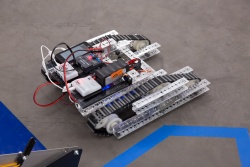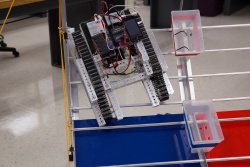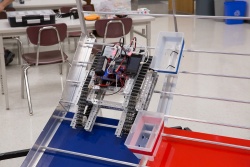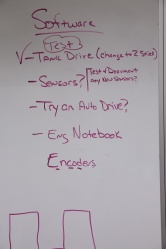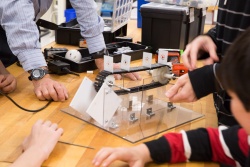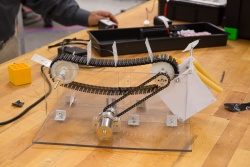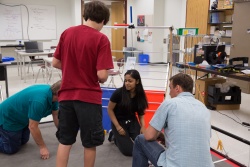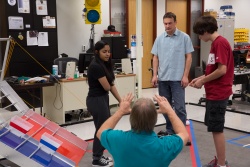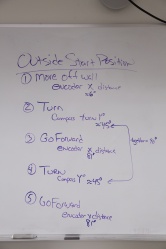| Programming
|
- The programming team started the meeting on a good note. They finally finished setting up the Java/Android environment on everyone's computer, and will not have to spend much more meeting time watching things install or load!
- The first task that was attempted was switching the arcade drive code to tank drive. This was a relatively easy fix, and didn't take very long. However, later in the meeting, Jacob and Akhila realized that they neglected to change the x values to y values (horizontal v. vertical), which messed up the driving controls. It was fixed later on, and taught the valuable lesson of always checking work, especially for small mistakes.
- The team then learned about encoders from mentor Gary. Because the color sensors are really short range, they figured that something else would have to be used in order to get the robot close to the beacon, and encoders seemed like the best option. Jacob was new to the subject, and although Akhila had seen them before, it was really great to understand how encoders work. They learned that the kinds of encoders already in the robot were quadrature encoders, and also the difference and benefits of these encoders of others. Gary also taught them about gyroscopes and compasses, which will help with the accuracy of turns in autonomous.
- After learning about the different kinds of sensors, the team, with the help of mentor George, tried to make a sample autonomous path. (See above for detail) This really helped to visualize where the autonomous is going. Next meeting, the team will start to write some basic code around this path, and see where it goes from there!
|
